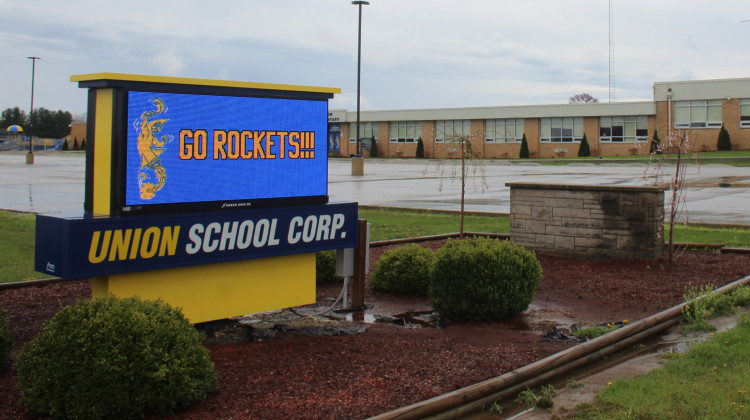
Union School Corporation, a one-building rural district in the tiny town of Modoc, educates more than 290 students in person and about 7,500 through virtual programs.
Eric Weddle/WFYIWINCHESTER, Ind. — Days after Indiana lawmakers quietly approved the closure of Union School Corporation, more than 150 people — including Stephanie Ward — turned out at the Randolph County Fairgrounds to demand answers from their state representative.
Ward wanted to know why the decision, tucked into a sweeping property tax reform bill with little public notice, came as a surprise to nearly everyone except the lawmaker who wrote it — Rep. J.D. Prescott (R-Union City).
“You could not have been going through the proper channels for so few people to have known about this before,” Ward said at the April 19 event. “Can you explain that to me?”
Prescott, who represents Union Township and parts of four surrounding counties in east central Indiana, told Ward that he came prepared to explain — but no longer would, since school leaders had threatened legal action to stop the closure.
The room — filled with Union families and staff members — laughed and jeered.
“The legal process was followed,” Prescott told them.
Ward, a Winchester resident who graduated from Union in 1989, said she was angry that there was no community discussion or public input at the Statehouse about closing the district.
In a final plea, she asked Prescott for more clarity going forward.
“This is about transparency,” Ward said. “If you're going to represent us, all we're asking is for more transparency.”
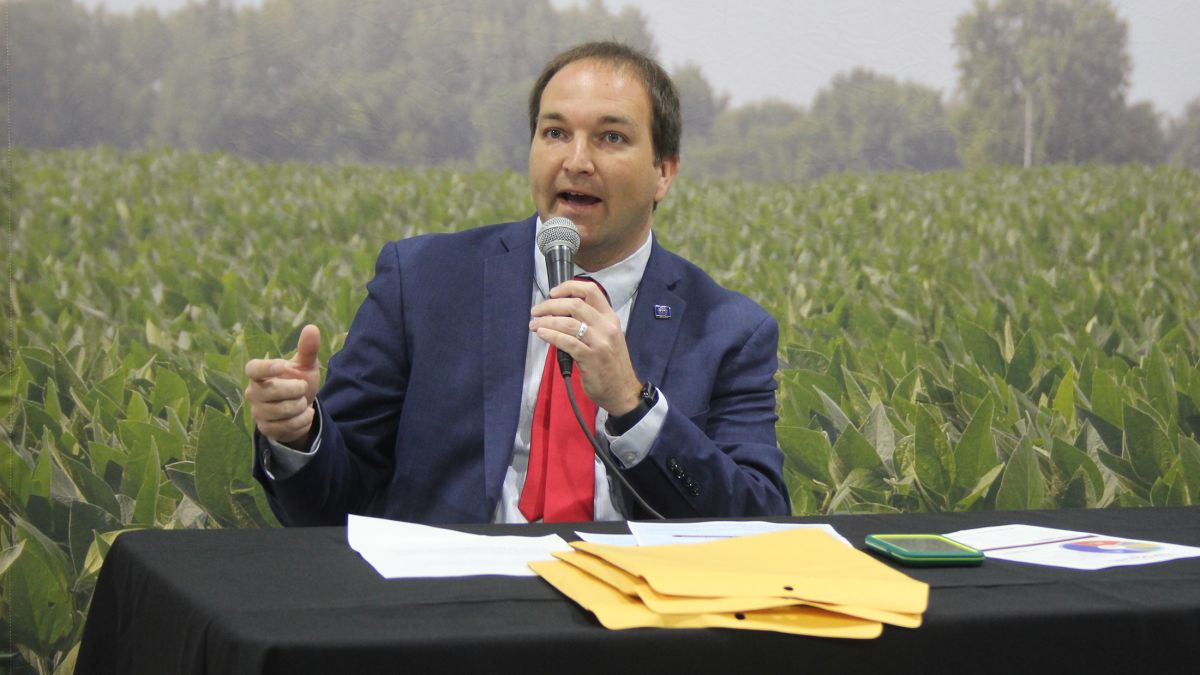
Union Schools, a rural district based in the tiny town of Modoc in Randolph County, educates more than 290 students in person and about 7,500 through virtual programs, according to the state's enrollment report. Under Indiana’s new property tax reform law, it will be dissolved in 2027 and the area restricted among other school corporations.
But Prescott and other Republicans who supported the dissolution have offered little explanation about why they pushed for the closure so quickly — or what will happen to the virtual schools Union operates in partnership with the company Stride Inc., formerly known as K12, a national online education provider.
Prescott told the crowd a combination of factors led him to write the legislation: prior years of discussion about district consolidation; more than half of families who live in the Union boundaries choosing to enroll their children in other districts; and poor academic performance at the virtual schools.
“You just couldn't continue to ignore the situation,” he said.
'What's the threshold?'
Some lawmakers and education leaders are questioning why Union was singled out — and how quickly the legislation moved forward.
Sen. Andrea Hunley (D-Indianapolis) criticized lawmakers for inserting the district’s closure into a sweeping bill on April 7 with no notice to the public and no opportunity for community input before it became law.
“Is this the way that we're going to do business from now on, that we can just simply amend into a piece of legislation the closure of an entire school district, and that we can do that without regard for public hearing or process,” she said on the Senate floor last week.
Hunley said the legislation redraws boundaries for a school corporation and its families without community involvement.
Chris Lagoni, executive director of the Indiana Small and Rural Schools Association, said this is the first time in 50 years a school district has been closed by state mandate.
District leaders now wonder if the state is applying new academic expectations to justify future closures.
This is not the first time the General Assembly has taken action to address troubled school districts. In 2017 and 2018, lawmakers approved state intervention in the Gary and Muncie school districts due to financial crises. But in both cases, there was robust public debate ahead of the votes on legislation.
“We would just like some very clear parameters to say this is the performance expectation,” Lagoni said. “We have 290 other school districts in the state, and they're all saying, ‘So what's the threshold, what's the line?’”
A district split without explanation
Under Senate Enrolled Act 1, signed by Gov. Mike Braun on April 15, Union Schools will be broken up by 2027. Its students and funds will now be split between two neighboring school districts – Blue River Valley Schools in Henry County and Monroe Central Schools in Randolph County. Both districts will also receive a cut of Union’s property tax revenue.
About 64% of students who reside in Union district boundaries seek out other options outside of Union, according to state data.
Earlier this month, Prescott said his legislation “is truly about focusing on what is in the best interest of the students” and the families who have chosen to not attend Union.
“It is really honoring what parents already decided in that community,” he said.
But while other districts would face financial stress for students living within the district enrolling elsewhere, Union has another source for enrollment.
Superintendent of Union Schools Galen Mast told WFYI that his school district is financially stable because of their virtual school contract that started in 2017 — Indiana Digital Learning School. Union takes home a 5% oversight fee, which comes out to about $3 million a year in additional revenue.

“We don't have those struggles,” Mast said about other rural districts. “We are one of the wealthiest school districts in the state of Indiana. We are doing great. We're thriving where we are, which is what really bothers us. Just leave us alone. Let us keep doing our thing.”
The district received $63.9 million in state support for the 2022-23 school year, according to a state dashboard.
Mast believes Union was targeted in legislation because their virtual schools attract students from other districts and charter schools.
In Indiana, state funding follows the student. So if a student leaves the district they reside in for another public school option, there is less funding for the home district to cover academic programs and teacher pay.
“INDLS is taking funding away from local communities and across the state, there's less kids,” Mast said.
Union currently enrolls about 290 brick-and-mortar students, according to the state’s 2025 enrollment report.
“We started with 400 kids online, and then COVID happened, and the online version just exploded,” Mast said.
Today, more than 7,500 students are enrolled in Union’s virtual schools.
Back in February, INDLS Executive Director Elizabeth Sliger asked the House Ways and Means Committee to increase state tuition support for virtual students. INDLS currently receives about $5,700 per student in the state’s foundation tuition grant — 85% of the funding provided to in-person students.
Prescott said he supports virtual learning as a “necessary tool,” but criticized INDLS test scores.
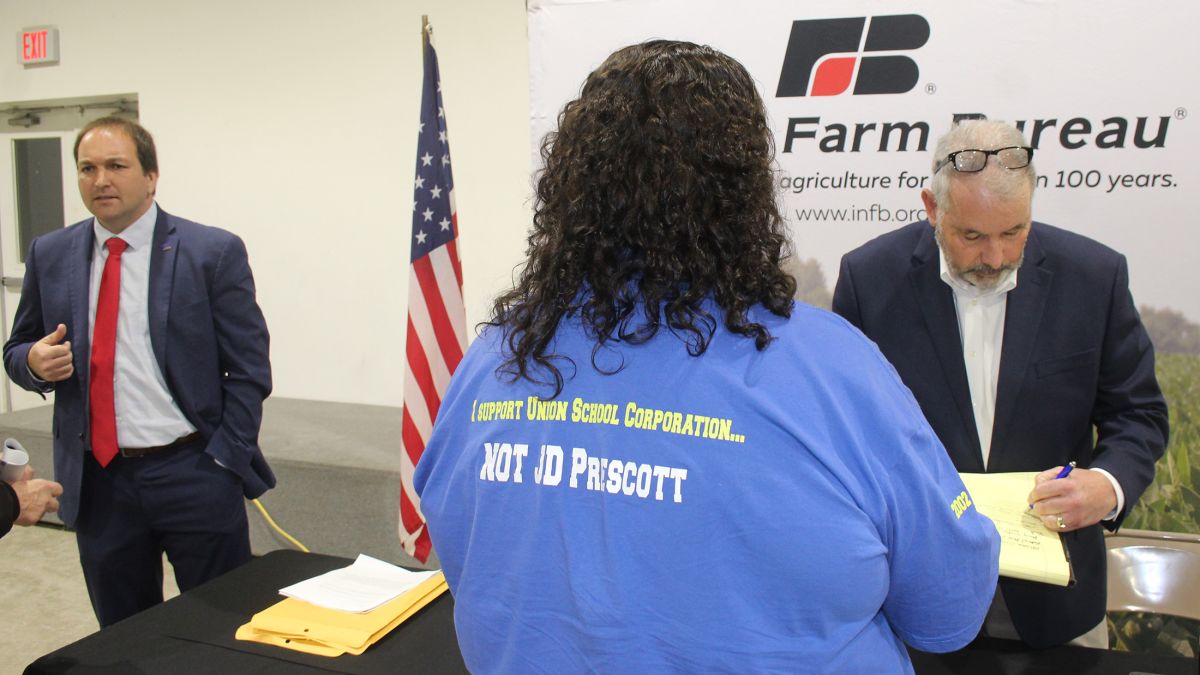
About 56% of high school seniors graduated from the Indiana Digital Alternative School, according to 2024 graduation rates. At least nine other virtual schools reported lower graduation rates in 2024 when the state average was 90.2%.
Only 12% of Indiana Digital Elementary students were proficient in English and Language Arts while about 17% of Digital Junior High students scored at or above proficiency, according to 2024 ILEARN scores. In math, scores for all INDLS students were well below proficiency.
About 6.4% of elementary students passed the state’s math assessment.
“I don't know how you get much worse than that,” Prescott said during the committee.
Sliger responded that her schools serve many students who’ve struggled in other systems — particularly the alternative school.
“Nobody is more of a supporter of public education, but once in a while it doesn't work for a kid, and when it doesn't work for that kid, they make a different choice,” Sliger said. “I am serving a student who has experienced educational failure previously.”
When asked if Union Schools could survive without their Stride contract, Sliger said they probably could not — crediting “spunky” innovation in the town.
“They are a small town who intends to keep their identity, keep their school, keep their largest employer, keep their community location and events," Sliger told lawmakers. “And they did it.”
Brooke Gabbert, a spokeswoman for Stride, said she expects INDLS to continue through July 2027 and are exploring options for the future.
Stride also operates six online charter schools and two virtual private schools that qualify for the state’s Choice Scholarship voucher program.
Community in limbo, and a call for clarity
Union School Board President Christy Ogden said she met with Prescott and Sen. Scott Alexander (R-Muncie) in early April. She had no idea an amendment to dissolve her district would be introduced days later.
“They just wanted to be able to tell the people around that they had a meeting with us,” Ogden said.
Ogden said she was told the closure was due to test scores — but the data Prescott referenced doesn’t distinguish between students in physical schools and those in virtual programs.
Only four students attending Union’s brick-and-mortar elementary school failed the IREAD-3 exam in 2024, compared to more than half of virtual students.
Alexander has echoed Prescott’s reasoning. In a statement, Alexander said Union has long-standing academic challenges.
“This language was brought forward to help initiate the discussion on how to ensure these students are receiving the best education possible,” he said.
Courtney Crown, a department spokeswoman, said Union’s two physical schools were not receiving state or federal support due to academic distress.
The district’s three virtual schools did fail to meet academic expectations, according to a 2023 federal accountability report. The Indiana Digital Alternative School, in particular, was flagged for comprehensive support due to a graduation rate below 60%.
The Indiana Department of Education offers support to low-performing schools, but only if requested.
At a rally hosted by the Indiana State Teachers Association on April 14, more than three school buses full of district students, parents and educators stood out in their royal blue shirts among a sea of red.
Chelsea Howard, a junior high and high school science teacher, said the decision to close Union feels arbitrary.
“There are schools that are as small,” she said. “There are schools with worse test numbers.”
Howard believes resentment over Union’s large-scale virtual programs may have played a role.
“It’s hardest to watch how it impacts students and families who chose Union,” she said.
Union is now facing the reality that it may close its doors. The education department said it will work with the district to prioritize students' needs.
But Mast, the superintendent, said Union won’t go down without a fight — and plans a legal challenge to what he calls an “unconstitutional” decision.
“We've been here for 70 years,” Mast said. “Our intent is to be here for another 70 years.”
WFYI education editor Eric Weddle contributed to this story.
Rachel Fradette is the WFYI Statehouse education reporter. Contact Rachel at rfradette@wfyi.org.
 DONATE
DONATE




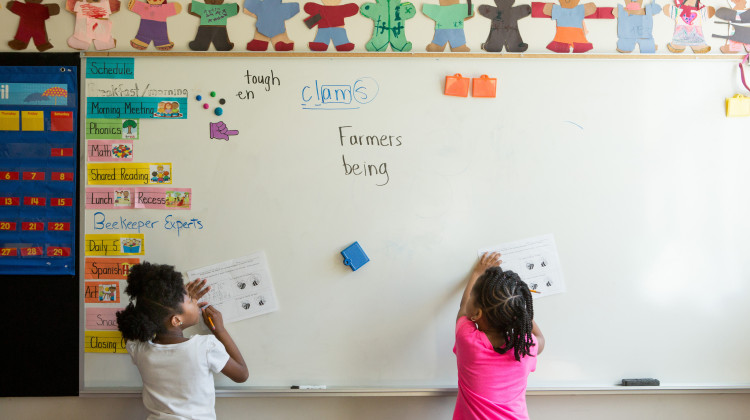
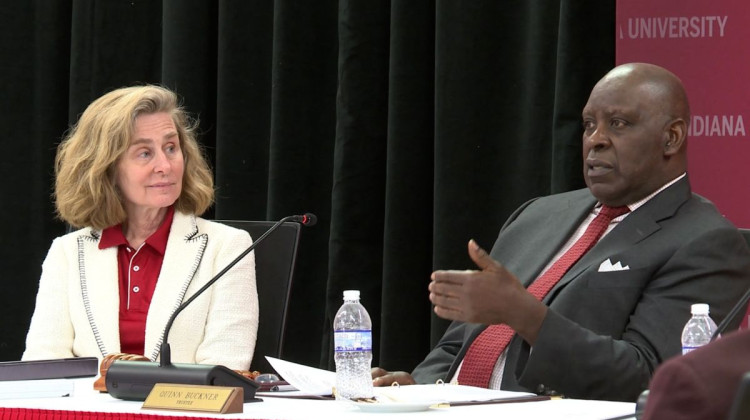
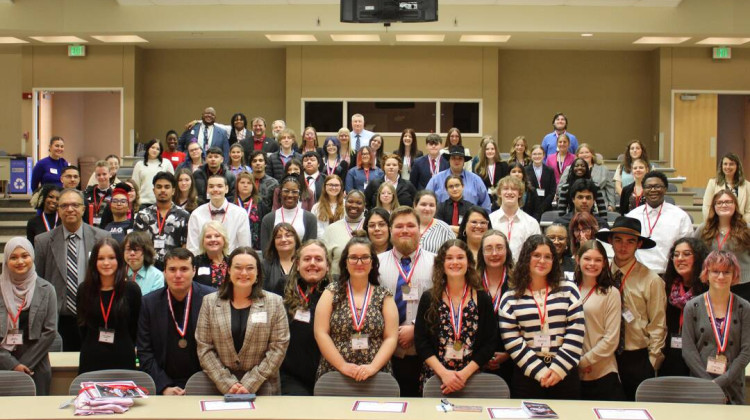

 Support WFYI. We can't do it without you.
Support WFYI. We can't do it without you.